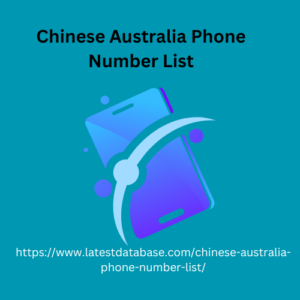Post by account_disabled on Mar 10, 2024 9:02:11 GMT 2
All of these data types are great for fleshing out the baseline info you get from your first-party data. different ways — Google searches and social media are two options, but one of the best methods is to use tools that will automatically pull that data for you. Why use B2B data enrichment? The reason to use B2B data enrichment is that it improves the overall accuracy of your data. If all you have to go on is a thin string of first-party data, it’s tough for you to learn everything you need about your audience, and a single inaccurate data point could throw off whole campaigns.
But with a greater supply of client data available to you, you’ll be able to get a Chinese Australia Phone Number List much better picture of who your target audience is, meaning you’ll be able to market to them far more effectively. That means you’ll ultimately drive more sales and earn more revenue. Data enrichment for B2B companies is often even more effective than it is for business-to-consumer (B2C) companies, because business clients often have far more third-party data available on them than individual consumers do. B2B data enrichment vs. B2B data cleaning Given that we’re discussing the process of making your customer data more accurate, you may be wondering if data enrichment is the same as data cleaning.

The answer is, no, it’s not. That said, the two terms are slightly related. B2B data cleaning is where you remove inaccurate or redundant information from your data. Data enrichment, on the other hand, is where you add data points. Both of them help improve the overall accuracy of your data, but they do it in different ways. Together, these two terms both fall under the umbrella of B2B data hygiene, which is a broad term for the overall process of keeping your data accurate. B2B data hygiene is incredibly important for ensuring that you’re basing your marketing efforts on sound, accurate data.
But with a greater supply of client data available to you, you’ll be able to get a Chinese Australia Phone Number List much better picture of who your target audience is, meaning you’ll be able to market to them far more effectively. That means you’ll ultimately drive more sales and earn more revenue. Data enrichment for B2B companies is often even more effective than it is for business-to-consumer (B2C) companies, because business clients often have far more third-party data available on them than individual consumers do. B2B data enrichment vs. B2B data cleaning Given that we’re discussing the process of making your customer data more accurate, you may be wondering if data enrichment is the same as data cleaning.

The answer is, no, it’s not. That said, the two terms are slightly related. B2B data cleaning is where you remove inaccurate or redundant information from your data. Data enrichment, on the other hand, is where you add data points. Both of them help improve the overall accuracy of your data, but they do it in different ways. Together, these two terms both fall under the umbrella of B2B data hygiene, which is a broad term for the overall process of keeping your data accurate. B2B data hygiene is incredibly important for ensuring that you’re basing your marketing efforts on sound, accurate data.
